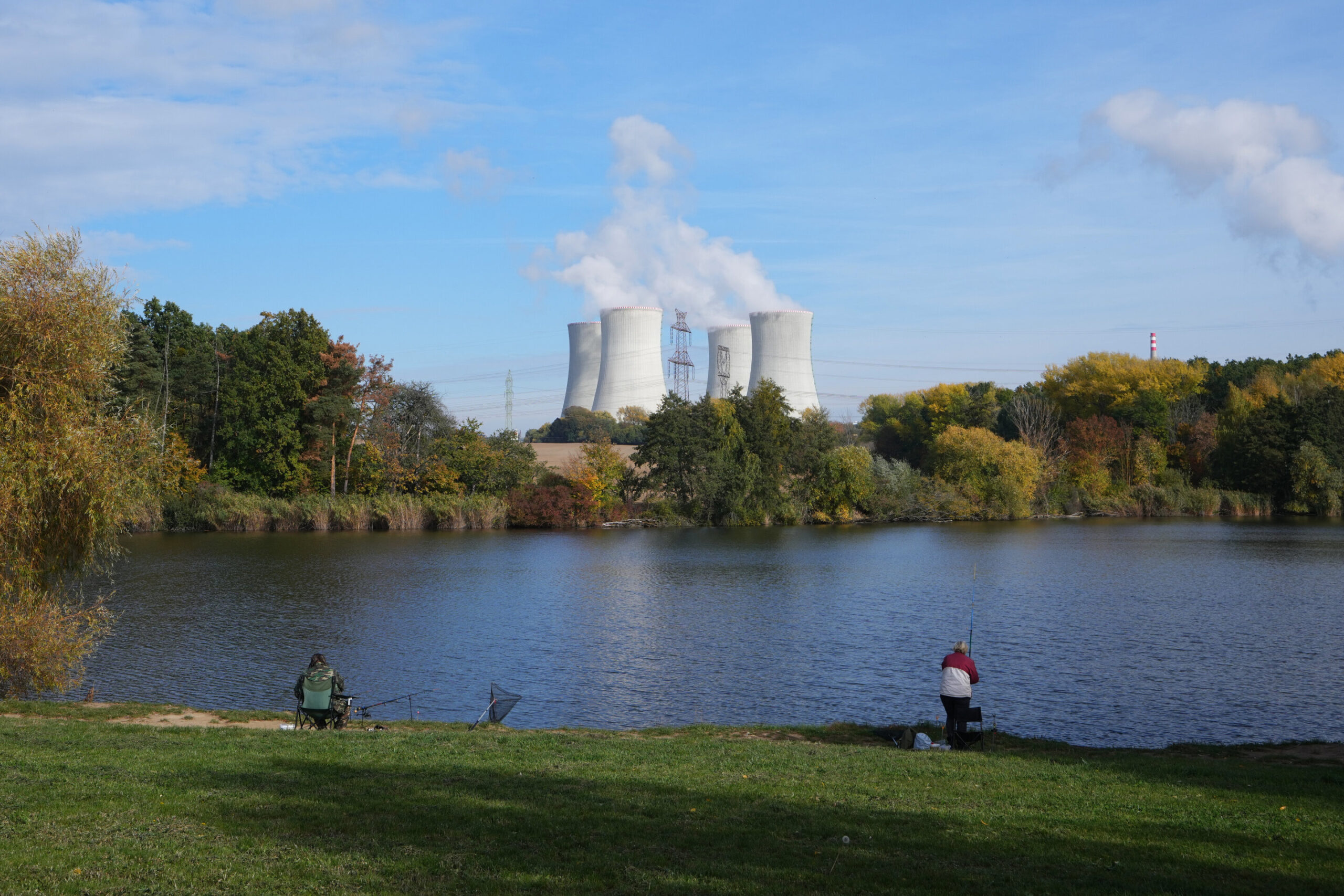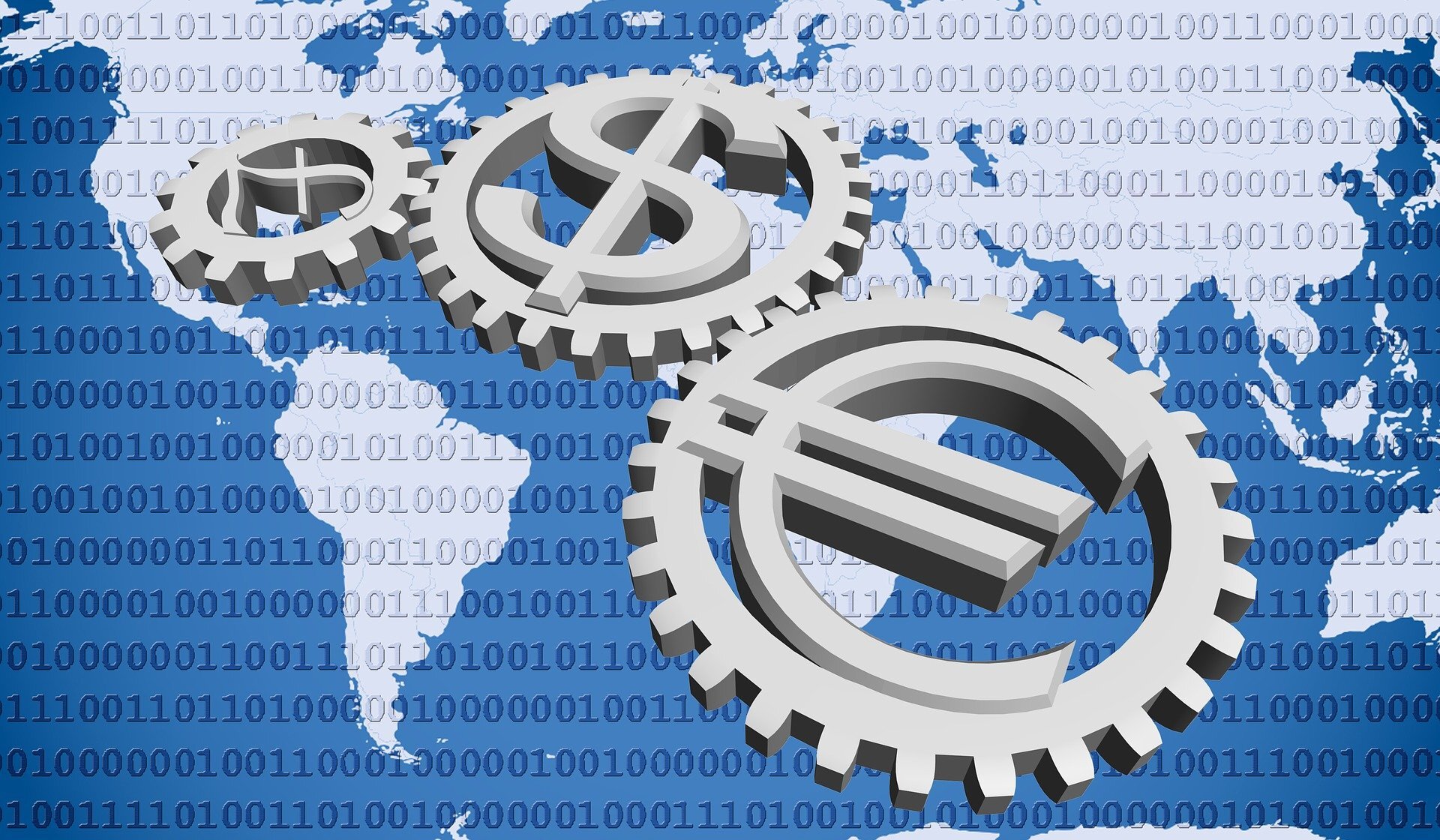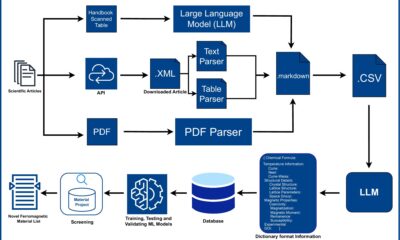Tech
Samsung Promo Codes: 30% Off in October 2025

Samsung makes everything from smartphones and gaming monitors, to smart TVs and dishwashers. I’m always looking for a sale (I’m assuming you are, too), and I’ve found the best Samsung promo codes and special offers to help you save big on your most important tech purchases. At WIRED, we often review the South Korean company’s products, especially Samsung’s vast lineup of Galaxy smartphones, and I’ve rounded up a bunch of Samsung coupons for (virtually) every type of shopper.
Get 10% Off With Samsung Promo Code and up to $2,100 Off Phones
Right now, Samsung has some of the best deals I’ve ever seen on their best-selling tech, and they’re about to get even better with limited-time trade-in credits, a special offer program, and bundle deals. Right now, you can get a Samsung promo code for 10% off TVs—all you have to do is register for their email newsletter. The offer is sent to your inbox and is valid through September 30.
Shop Samsung’s best coupons and offers to score major discounts (sometimes up to $2,100) on smartphones, laptops, tablets, TVs, and their latest releases. And when you buy products together that you already need, you can save a ton. This includes up to 54% select Galaxy Buds, watches and tablets when you order select products, like the Galaxy S25 Ultra.
If you’re in the market for a new Samsung phone, you can get a new Galaxy Z Fold7 for $10 less with a trade-in. Feeling nostalgic? The new spin on an old classic, the Galaxy Z Flip7 is $150 off or up to $700 off with trade-in.
Or maybe you want one of the Galaxy S25 Ultra models. Get $200 off a Galaxy S25 Ultra, you’ll get up to $940 off with instant trade-in credits, and a storage upgrade for a limited time.
Unlock a 30% Off Samsung Promo Code With Offer Programs, Plus a $100 Referral Code
One of the hottest Samsung promo codes is a whopping 30% discount for government employees, first responders, military personnel, and educators. Samsung also has offer programs, meaning you can combine your promo code discount with most other offers to increase discounts. Get a pal involved for more savings—when a friend uses your referral code to make a purchase at Samsung.com, they’ll get 5% off their purchase (up to $250 off) and you’ll get up to $100 off per order (with the potential to save $1,000 per calendar year). My insider tip is to sign up for a Samsung Rewards account and download the mobile app for even more perks, including exclusive Samsung coupons, flash sales, and updates on the newest products, like the QLED 8K, select refrigerators, and other home appliances.
Save up to 35% on These Trending Samsung TV Deals
Along with other great tech, Samsung has some seriously nice TVs. The Samsung Frame TV has been trending this year for its stylish ability to blend into your home’s decor. Plus it just feels more elevated than a regular ol’ TV and mount. Some other trending TVs this Summer have been the Q60D, S90C, and the S95D models–not only do they have instant discounts of over up to 35% ($2,100 off). Plus, there are tons of TV and home theater deals at Samsung, including a bundle offer for $7500 off when you buy a Neo QLED 4K TV with a Dolby ATMOS soundbar. If you’re in the market for a new TV, it’s worth checking out Neo QLED AI Smart TVs to score 1 year of ESPN for free (worth $299).
You can also take advantage of their Trade-In Recycling Program for up to $200 off when you trade in your old TV—any brand, any size. When your new one is delivered, Samsung will handle recycling the old one, so you can enjoy your upgrade.
$169 Off With Samsung Promo Code or a $400 Gift Card on Appliances
Although here at WIRED we mostly cover Samsung’s traditional AV tech, they also make top-of-the-line kitchen and home appliances. During the Buy More Save More Event (through December 4), you can get up to 40% off high-tech Samsung kitchen appliances along with free 3-day rush shipping. When you buy any two qualifying Samsung Appliances, you’ll receive a $100 Samsung Prepaid Mastercard; if you buy three qualifying Samsung Appliances, you’ll receive a $300 Samsung Prepaid Mastercard; and when you purchase four or more appliances, you’ll get a Samsung Prepaid Mastercard for $400.
In addition to Buy More Save More discounts, other eye-catching deals include an extra $600 off a top freezer refrigerator when you buy a Bespoke 4-Door Flex Refrigerator with AI Family Hub + AI Vision, and $1,100 off the Bespoke 4-Door French Door Refrigerator with Beverage Center. Special offers also include free installation service, plus Samsung will haul away your old appliances and recycle them, while you get a $50 energy rebate. This futuristic fridge is basically also an iPad, with an AI Family Hub with the large screen and changeable door panels. Plus, there’s AI Vision inside, so you always know what’s inside (and what you need to buy at the store). And the Beverage Center has an internal dispenser or a built-in AutoFill Water Pitcher to get cold, crisp water whenever you want it, whichever way you want.
You can save an extra $170 with code SAVE169 at checkout, plus you’ll get $50 in Samsung Rewards (equal to 10,000 bonus points) with your purchase. And right now, you can get $1,000 off a Bespoke Smart Slide-In Electric Range. This range is straight from a The Jetsons fantasy, with an AI Home LCD display, which is pretty much a kitchen robot helper that gives you personalized recipe recommendations, the ability to search for and follow video recipes, and access your favorite apps so you can see who’s at your door through your video doorbell, and more. There’s also a Smart Oven Camera inside, meaning you can check on meals as they cook from anywhere and even share time-lapse videos to show off your skills.
Stay up to Date on all Things Samsung at WIRED
WIRED also has guides to help determine which Galaxy S24 phone is best for you and how to set up your Samsung Galaxy S25 to ensure you’re getting the most out of its features, as well as advice on which Galaxy S24 series accessories, like cases, chargers, and power banks, are worth the money.
Us nerds here at WIRED also follow CES (sort of the Coachella for tech nerds) for all the updates on tech (almost) no one asked for, and Samsung’s bi-annual Galaxy Unpacked event, where they show off its newest toys. We have a lot of opinions about Samsung’s foldable Galaxy Z Flip6 and Z Fold6 phones. We are also patiently awaiting new releases of Galaxy Tab tablets, a new line of Galaxy Buds Pro 3 wireless earbuds, and a new series of the Galaxy Watch, with a new design and improved sensors for health
Tech
Czech Republic plans $19 billion nuclear expansion to double output and end fossil fuel reliance

The eight huge cooling towers of the Dukovany power plant overlook a construction site for two more reactors as the Czech Republic pushes ahead with plans to expand its reliance on nuclear energy.
Mobile drilling rigs have been extracting samples 140 meters below ground for a geological survey to make sure the site is suitable for a $19 billion project as part of the expansion that should eventually at least double the country’s nuclear output and cement its place among Europe’s most nuclear-dependent nations.
South Korea’s KHNP beat France’s EDF in a tender to construct a new plant whose two reactors will have an output of over 1,000 megawatts each. After becoming operational in the second half 2030s, they will complement Dukovany’s four 512-MW reactors that date from the 1980s.
The KHNP deal gives the Czechs an option to have two more units built at the other nuclear plant in Temelín, which currently has two 1,000-megawatt reactors.
Then, they are set to follow up with small modular nuclear reactors.
“Nuclear will generate between 50% and 60% around 2050 in the Czech Republic, or maybe slightly more,” Petr Závodský, chief executive of the Dukovany project, told The Associated Press in an interview.
The nuclear expansion is needed to help the country wean itself off fossil fuels, secure steady and reliable supplies at a reasonable price, meet low emission requirements and enable robust demand for electricity expected in the coming years to power data centers and electric cars, Závodský said.

Europe’s nuclear revival
The Czech expansion comes at a time when surging energy demand and looming deadlines by countries and companies to sharply cut carbon pollution are helping to revive interest in nuclear technology. While nuclear power does produce waste, it does not produce greenhouse gas emissions, like carbon dioxide, the main driver of climate change.
The European Union has accepted nuclear by including it in the classification system for environmentally sustainable economic activities, opening the door to financing. That has been a boost for the Czech Republic, Slovakia, Hungary and France—the continent’s nuclear leader—that have heavily relied on nuclear.
Belgium and Sweden recently scrapped plans to phase out nuclear power. Denmark and Italy are reconsidering its use, while Poland is set to join a club of 12 nuclear-friendly nations in the European Union after signing a deal with U.S.-based Westinghouse to build three nuclear units.
The EU generated 24% of nuclear electricity in 2024.
Britain signed a cooperation deal with the United States in September that Energy Secretary Ed Miliband said would lead to “a golden age of nuclear in this country.” It will also invest 14.2 billion pounds ($19 billion) to build the Sizewell C nuclear power plant, the first in the U.K. since 1995.
CEZ, the dominant Czech power company in which the government holds a 70% stake, and Britain’s Rolls-Royce SMR have agreed on a strategic partnership to develop and deploy small modular nuclear reactors.

Money matters
The cost of the Dukovany project is estimated at over $19 billion, with the government agreeing to acquire an 80% majority in the new plant. The government will secure a loan for the new units that CEZ will repay over 30 years. The state will also guarantee a stable income from the electricity production for CEZ for 40 years. Approval is expected to be granted by the EU, which aims to become “climate-neutral” by 2050.
“We’re in a good position to argue that we won’t be able to do without new nuclear units,” Závodský said. “Today, we get some 40% electricity from nuclear, but we also currently get another 40% from coal. It’s clear we have to replace the coal.”
Uncertainty over financing has caused a significant delay in the nuclear expansion. In 2014, CEZ canceled a tender to build two reactors at the existing Temelin nuclear plant after the government refused to provide financial guarantees.
Russia’s energy giant Rosatom and China’s CNG were excluded from the Dukovany tender on security grounds following the Kremlin’s invasion of Ukraine.
CEZ signed a deal wit h Westinghouse and France’s Framatome to supply nuclear fuel for its two nuclear plants, eliminating the country’s dependence on Russia. The contract with KHNP secures fuel supplies for 10 years.

Opposition
While atomic energy enjoys public support, skeptical voices can be heard at home and abroad.
The Friends of the Earth say it is too costly and the money could be better used for improving the industry. The country also still does not have a permanent storage for spent fuel.
The Dukovany and Temelín plants are located near the border with Austria, which abandoned nuclear energy after the 1986 Chernobyl nuclear explosion. In 2000, a dispute over the Temelín plant resulted in a political crisis and blocked border crossings for weeks.
Austria remains the most nuclear-skeptical EU country and its lower house of Parliament has already rejected the Czech small modular reactors plan.
© 2025 The Associated Press. All rights reserved. This material may not be published, broadcast, rewritten or redistributed without permission.
Citation:
Czech Republic plans $19 billion nuclear expansion to double output and end fossil fuel reliance (2025, November 16)
retrieved 16 November 2025
from https://techxplore.com/news/2025-11-czech-republic-billion-nuclear-expansion.html
This document is subject to copyright. Apart from any fair dealing for the purpose of private study or research, no
part may be reproduced without the written permission. The content is provided for information purposes only.
Tech
Renewable energy is reshaping the global economy—new report

World leaders gather for the UN climate summit (COP30) in Belém, Brazil, amid concerns about the slow progress in cutting global carbon emissions. Ten years into the historic Paris climate agreement, we are off track to meet its core objective, to keep global warming well below 2°C, relative to pre-industrial levels.
Yet there are glimmers of hope, and none more important than the astounding progress on renewable energy. Renewables are now so cheap that the clean energy transition is no longer an economic burden, it is a momentous opportunity.
Climate change campaigners tend to see renewables as an environmental imperative, an effective way of cutting emissions. They are that, of course. But they are also a powerful engine of investment, jobs and growth. They are reshaping the global economy. In my team’s new report, we lay out the evidence.
The first economic dividend of renewables is inclusion. Access to affordable energy remains a critical sustainable development goal, which shapes everything from education to health to women’s empowerment. Distributed renewables—from solar home systems to mini-grids—are our best chance yet of bringing affordable energy to all.
Across Africa, Asia and Latin America, renewable energy entrepreneurs are doing what national grids have struggled to do: reaching remote villages and replacing polluting diesel generators with clean, reliable power.
Because of its modularity, renewable electricity can be built out fast, expanded flexibly and maintained locally. Renewable energy firms are combining these technical advantages with new business models that make renewables more accessible (for example, through pay-as-you-go models) and keep benefits in the local community (for example, by offering energy services like cold storage, phone charging and water pumping, as well as electricity).
Investment, jobs and growth
If inclusion is the first dividend, investment is the second. Every dollar invested in renewables delivers more economic bang than a dollar spent on fossil fuels. The International Monetary Fund estimates that clean energy investments generate about 1.5 times their cost in economic activity, while fossil fuels yield less than one-for-one. Renewables do not just pay back; they pay forward through spending on supply chains and local wages.
The numbers are staggering. Between 2017 and 2022, climate finance flows into the 100 largest developing countries (excluding China) boosted their GDP by a combined US$1.2 trillion (£0.9 trillion)—the equivalent of 2%–5% of GDP for most nations. In Brazil, the host of COP30, renewable investments raised GDP by US$128 billion over those six years, according to our report.
Climate finance flows are still insufficient. To increase them, we need more concessional funding, more risk guarantees and more partnerships between governments, investors and local communities.
In the Dominican Republic, a blend of policy reform, clear incentives and blended finance has helped the country mobilize over US$6.5 billion in clean energy investment and double its renewables capacity in just three years.
The energy transition is often painted as a jobs killer, but the evidence says otherwise. Intergovernmental organizations project that there will be 43 million clean energy jobs by 2050, far outstripping those lost in fossil fuels.
For our report, we took a closer look at the jobs market in South Africa. For 12 months we collected data from job adverts and found a striking fact: clean energy jobs pay 16% more on average than all other advertised roles. For the most part the higher wages reflect the fact that clean energy jobs are high-skilled jobs, which require experience, training and problem-solving skills.
The high skills requirements are a challenge as well as a boon. Taking full advantage of the clean jobs revolution will require proactive skills development, both in the classroom and on the job. But for the young labor forces of many developing countries, the message is clear: renewables are not just a climate strategy, they are a job opportunity.
Perhaps the most underappreciated economic benefit of renewables concerns productivity. Cheap, efficient energy is the lifeblood of industrial growth. Renewable energy is now much cheaper than fossil fuels, particularly when factoring in what is lost when turning energy (say, car fuel) into usable services (propulsion).
We calculated that with a rapid conversion to renewables, energy-sector productivity could double by 2050, compared to both current levels and a fossil fuel future. Since energy is such a ubiquitous input to all other economic activities, this has significant economy-wide benefits. For some developing countries, the GDP boost could be as high as 9%–12%—simply from having more efficient energy services.
These productivity gains are not evenly distributed. For once, it could be developing countries that benefit most. Industrialized countries grew rich on the back of cheap and abundant energy. In a low-carbon economy, it will be sun-rich developing countries that have the cheapest, most abundant sources of energy. This critical shift in comparative advantage could finally help to narrow the global prosperity gap.
At COP30, leaders are debating climate targets, finance mechanisms and transition timelines. But they should also recognize this deeper reality: renewables are not a drag on growth but its new engine. In a world anxious about growth and prosperity, the clean energy transition is an economic strategy as much as an environmental one.
The challenge, as our report reminds us, is to share these gains equitably. Without fair benefit-sharing the transition risks repeating the inequities of the fossil fuel era. But get it right, and renewables can power not just cleaner economies, but fairer ones.
This article is republished from The Conversation under a Creative Commons license. Read the original article.![]()
Citation:
Renewable energy is reshaping the global economy—new report (2025, November 15)
retrieved 15 November 2025
from https://techxplore.com/news/2025-11-renewable-energy-reshaping-global-economy.html
This document is subject to copyright. Apart from any fair dealing for the purpose of private study or research, no
part may be reproduced without the written permission. The content is provided for information purposes only.
Tech
New carbon capture method uses water and pressure to remove CO₂ from emissions at half current costs

A new, low-cost method for capturing carbon dioxide emissions from power plants and industrial facilities relies on a simple physical phenomenon—the same one that causes bubbles to fizz when popping a bottle of Champagne or cracking open a bottle of seltzer.
The process, called pressure-induced carbon capture (PICC), uses water and pressure to pull carbon dioxide out of exhaust gases before it reaches the atmosphere, offering a cleaner and far less expensive alternative to traditional chemical methods.
Co-inventors Dr. Mark Holtzapple, professor of chemical engineering at Texas A&M University, and Jonathan Feinstein of ExcelThermic Enterprises have filed patents for licensing the technology to power plants, hydrogen facilities, cement kilns, steel blast furnaces and other industrial emitters worldwide. Holtzapple said PICC is a practical solution to an urgent problem because fossil fuel combustion—which releases greenhouse gases into the atmosphere—remains an important component of the global energy mix.
“Our invention is a cost-effective way to address one of the greatest challenges facing humanity,” Holtzapple said. “We can capture carbon dioxide from flue gas using only water and pressure, which makes the process simple, clean and less expensive than competing technologies.”
Traditional carbon capture systems rely on strong chemicals called amines that bind with carbon dioxide to remove it from exhaust gases. Amines struggle to pull more than 90% of the carbon dioxide out of the flue gas, Holtzapple said. Also, the amines are expensive and degrade when exposed to flue gases. Furthermore, permitting 10% of the carbon dioxide to escape into the environment is no longer tenable, he said.
In contrast, PICC uses physical absorption. Because PICC uses no chemical bonds, carbon dioxide pops back out of the water at reduced pressures just as easily as it dissolves in water at high pressure.
“Everybody knows that high-pressure carbon dioxide dissolves in water, and that when you open a bottle of Coca-Cola or beer you see that carbon dioxide bubble back out,” Holtzapple said. Once released, the carbon dioxide can be safely stored or utilized.
How the system works
In operation, flue gas from combusting coal, natural gas or biomass—like forest waste, crop residues or municipal solid waste—is first cooled and compressed. The high-pressure gas is then piped into an absorption column, where cold water flows downward while the gas moves upward through a structured packing that maximizes contact between the two streams. As the nearly clean gas reaches the top of the column, it contacts fresh water entering at the top. There, the last traces of carbon dioxide dissolve into the water, with clean gas releasing into the environment.
The water exiting the bottom of the column contains dissolved carbon dioxide and is transferred to a series of vessels, each operating at lower and lower pressures, where the carbon dioxide progressively bubbles out. Holtzapple said the released carbon dioxide is then ready for compression and injection into underground geological formations, such as saline aquifers, where it is permanently stored.
A lower cost path to near-total capture
Economic analyses show that PICC can capture and compress 99% of carbon dioxide emissions for $26 per metric ton. Other current technologies capture about 90% and cost $50 to $100 per metric ton, Holtzapple said.
Additionally, by adding a small amount of lime—an alkali—to the water, PICC captures 100% of carbon dioxide for an average cost less than $28 per metric ton. At that level of capture, even the carbon dioxide from the combustion air is removed, Holtzapple said.
“Without adding carbon dioxide to the atmosphere, PICC allows us to use abundant fossil fuels on which our civilization is built. Furthermore, by coupling PICC to biomass combustion, we can remove carbon dioxide from the atmosphere cost effectively,” he said.
Citation:
New carbon capture method uses water and pressure to remove CO₂ from emissions at half current costs (2025, November 15)
retrieved 15 November 2025
from https://techxplore.com/news/2025-11-carbon-capture-method-pressure-emissions.html
This document is subject to copyright. Apart from any fair dealing for the purpose of private study or research, no
part may be reproduced without the written permission. The content is provided for information purposes only.
-

 Entertainment1 week ago
Entertainment1 week agoChina unveils£5.4 bn Fujian, its most advanced aircraft carrier yet
-

 Tech6 days ago
Tech6 days agoFrom waste to asset: Turning ethanol production CO₂ into jet fuel
-

 Entertainment1 week ago
Entertainment1 week agoRobert Pattinson jokes about competing with Gen Z
-

 Politics1 week ago
Politics1 week agoIDF lawyers warned of possible Gaza war crimes: US intel findings
-

 Sports1 week ago
Sports1 week agoIsraeli cycling team loses top sponsor despite honoring request to remove country from name
-
Sports1 week ago
College football winners and losers: The catch of the year saves Indiana
-

 Entertainment1 week ago
Entertainment1 week agoAlex Cooper apologizes to Taylor Swift for bizarre admission
-

 Tech1 week ago
Tech1 week agoMagnetic materials discovered by AI could reduce rare earth dependence


















